Fondugues Pradugues is a family-owned estate located on the Saint Tropez Peninsula in the heart of France’s Cote d’Azur. The 35-acre, organically and biodynamically-farmed vineyard is sited on the plain of Ramatuelle, a valley protected by hillsides on all sides. After visiting several of our wineries in the Napa Valley, including CADE Estate, our client asked us to design a contemporary winery that would also speak to the rich agricultural vernacular in Southern France, and align with the property’s existing residence.
Architizer chatted with Juancarlos Fernandez, Partner at Signum Architecture to learn more about this project.
Architizer: Please summarize the project brief and creative vision behind your project.
Juancarlos Fernandez: This winery in Saint Tropez provides a contemporary winemaking and hospitality experience that also speaks to the surrounding agricultural vernacular.
Three long, low buildings form a simple geometry — the first set parallel to the vine rows, the second perpendicular to the first and the third at a deliberate angle, forming a courtyard equally well-suited to production or hospitality. Carefully spaced openings create a sense of rhythm, following the “golden ratio”– a proportion most pleasing to the human eye. The materials emphasize the agricultural context and the horizontality of the structures, while the overall approach emphasizes the sense of community.
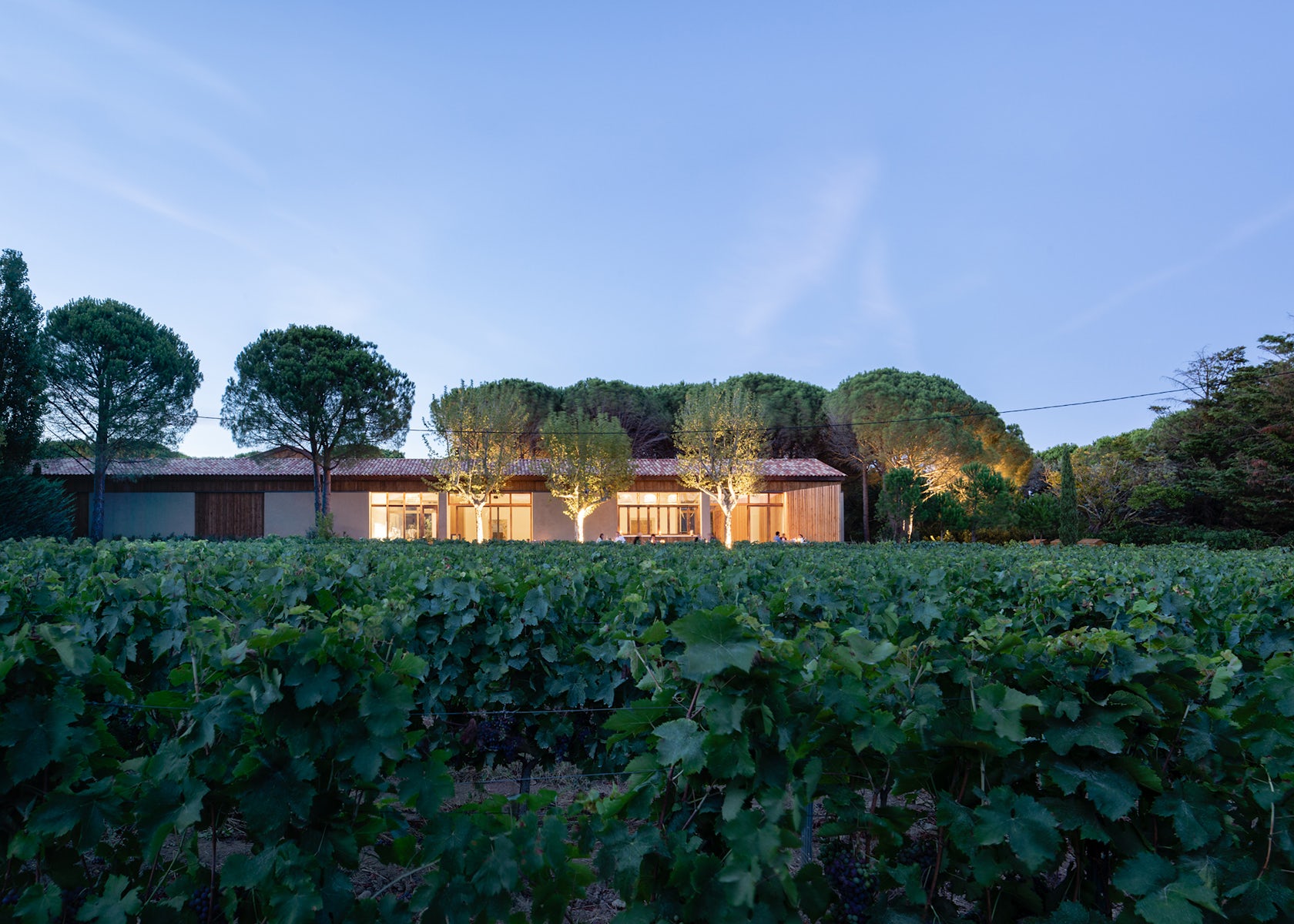
© Signum Architecture
What inspired the initial concept for your design?
Fondugues Pradugues is a family-owned estate located on the Saint Tropez Peninsula in the heart of France’s Cote d’Azur. The design, though it provides a contemporary winemaking and wine tasting experience, is inspired by the agricultural architecture in Southern France and has been carefully crafted to align with the property’s existing residence. To form a subtle connection with the region’s agricultural vernacular, our concept was to form long buildings with a repetition of openings – simple structures with just the right proportions that fit authentically into the land and landscape.
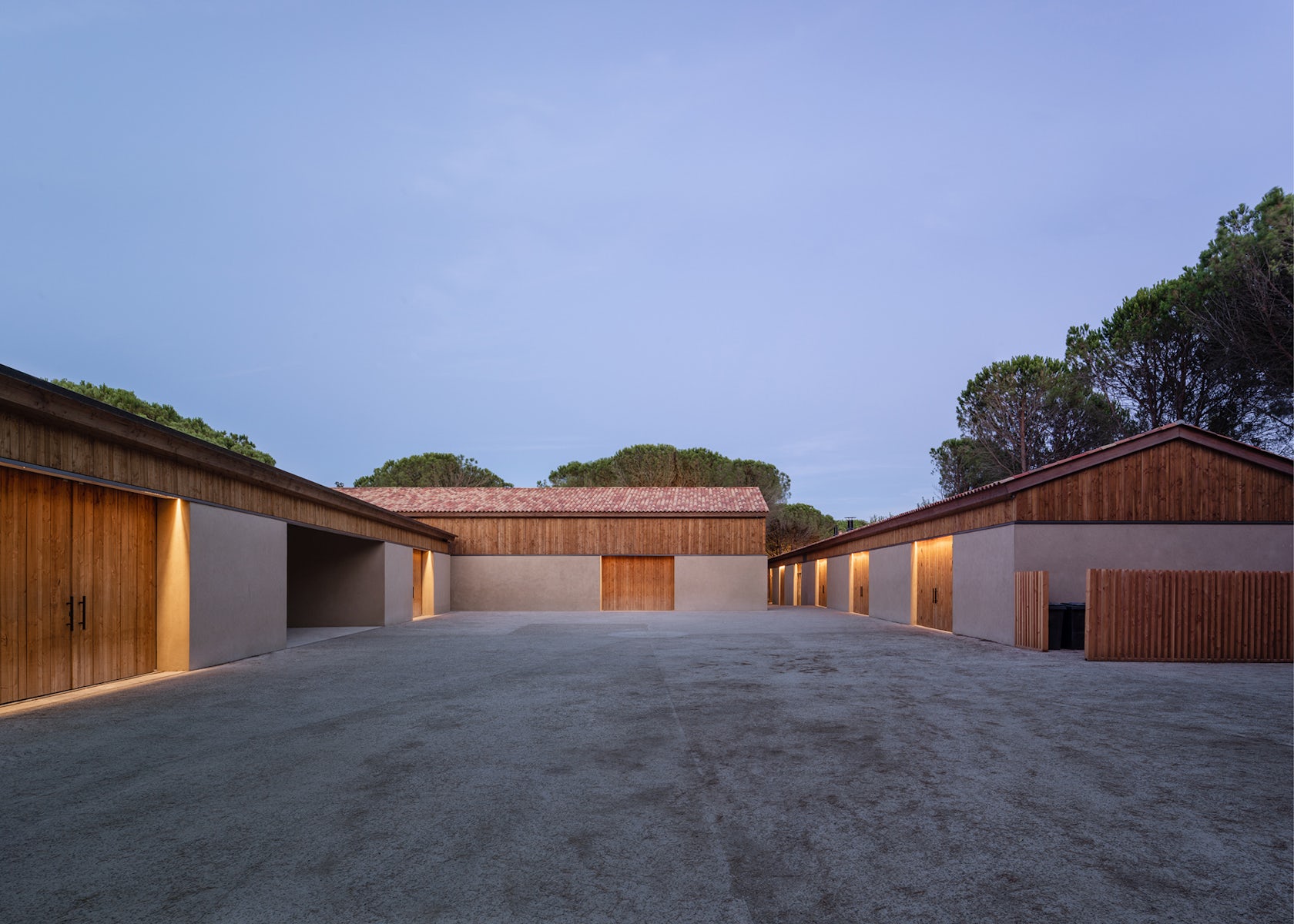
© Signum Architecture
What do you believe is the most unique or ‘standout’ component of the project?
For me, the most unique or defining element of the design is the length of the primary building, the continuous line of the roof and and how the elements organize themselves underneath it. The length of the structure allows the secondary structures to be arranged around it to form a building geometry that allows indoor/outdoor spaces to form naturally, supporting the communal nature of this valley and this winemaking family.
What was the greatest design challenge you faced during the project, and how did you navigate it?
The greatest challenge was to convince the local authorities that our approach to design was appropriate for the area. Typically, tasting rooms are aligned next to the road, but we elected to site the winery away from the road, close to the existing house and adjacent to the vineyards. Though this is typical in the U.S., it was a new concept to local authorities. The mayor now is one of the project’s biggest supporters, and uses Fondugues Pradugues as a blueprint for wineries built throughout the region — for the design, but also for it’s organic, biodynamic, site-sensitive approach to making wine.

© Signum Architecture
How did the context of your project — environmental, social or cultural — influence your design?
This 35-acre vineyard is set on the plain of Ramatuelle, a valley close to the Mediterranean Sea and protected by hills on all sides. The valley, with its pines and other trees, forms the heart of the winery’s environmental context. The Grand Valat river runs along the western edge of the vineyards, with a green corridor that holds a biodiversity reserve with a multitude of trees, vegetation, animals and birds.
The concept of simple structures that provide an integrated, indoor/outdoor experience, while reflecting the area’s communal culture and agricultural forms, was paramount. To preserve the integrity of the site, we set the new winery under the tall pines, close to the existing house. The atmosphere is casual and communal, with outdoor kiosks, patanque courts, picnic tables and wine served out of a Peuguot van converted to an outdoor bar.
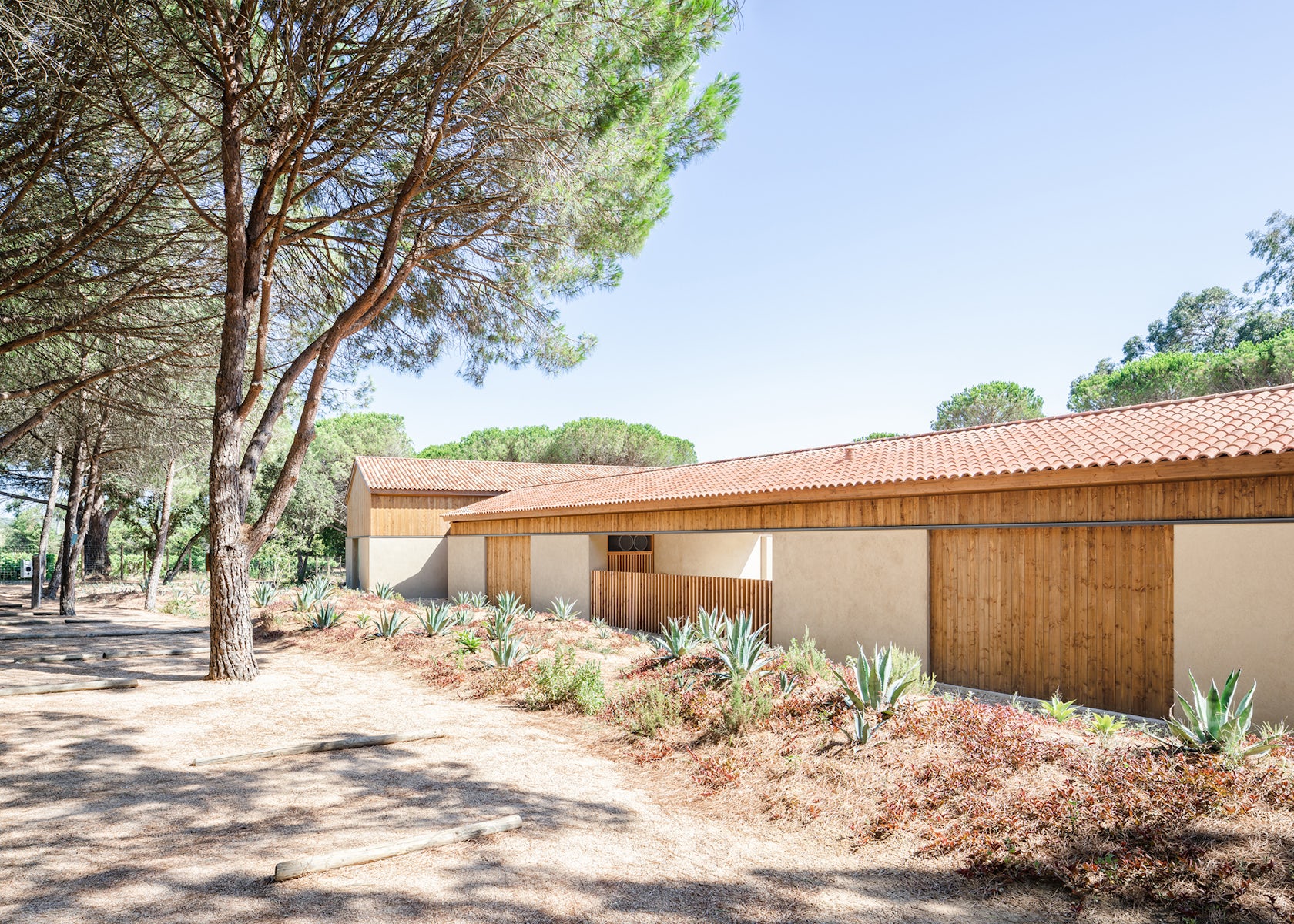
© Signum Architecture
What drove the selection of materials used in the project?
The organization of materials emphasizes the horizontality of the buildings. Walls of plaster are set upon a masonry plinth; wood above directly references the surrounding pines, while the traditional tile roofs reflect the tile roofs endemic to the South of France.
What is your favorite detail in the project and why?
My favorite detail is the constant datum dividing the upper and lower sections of the walls, which flows from one building to the next.
How important was sustainability as a design criteria as you worked on this project?
The approach to sustainability on this project was natural and authentic: materials are locally sourced, buildings are naturally ventilated, thick walls provide passive cooling. These are building strategies that have worked effectively in this area for thousands of years.
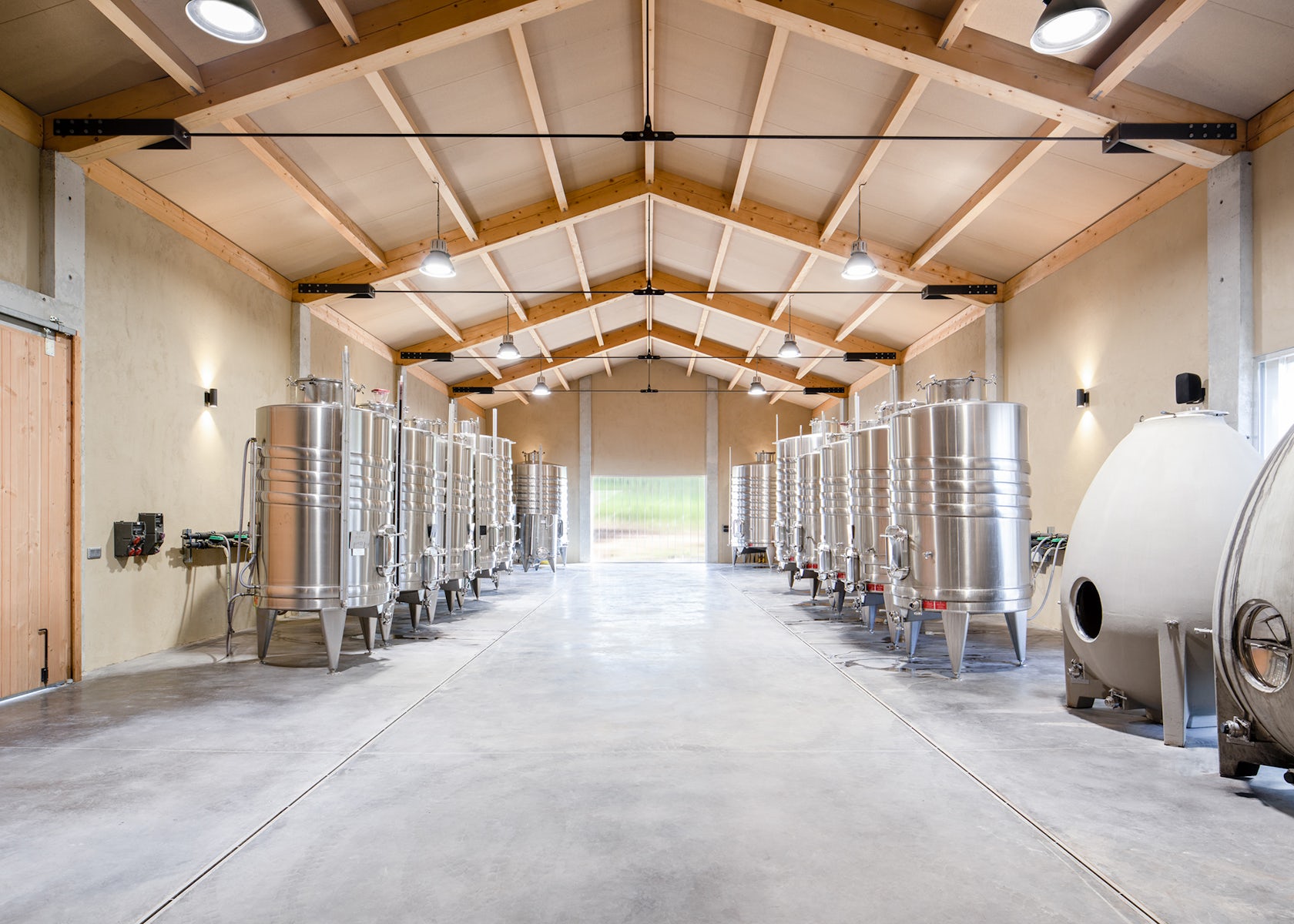
© Signum Architecture
In what ways did you collaborate with others, and how did that add value to the project?
Our collaborative relationship with the owner was a natural fit. Our approaches to the land and to the structures for winemaking were symbiotic. We also worked with local architect Pascal Costamagna to locally source materials, which was critical.
How have your clients responded to the finished project?
They love it. What they didn’t expect was that their winery would become a blueprint for how wineries in the region should be approached in the future.
What key lesson did you learn in the process of conceiving the project?
I was educated at the University of Guadalajara in Mexico, using metric measurements. One key lesson was how easy it was to return to metric measurements in design. In concept and schematic design, I design proportionally, translating those proportions to concrete measurements in design development. Following the design principles of the “golden ratio,” then translating those proportions into metric measurements proved easier than it would have using the imperial system of measurement.
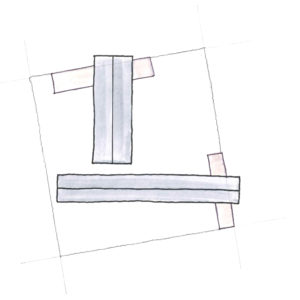
How do you believe this project represents you or your firm as a whole?
I think this project demonstrates our firm’s versatility, and our dedication to design that is an authentic response to the site. This project, located in Southern France, shares a similar latitude and culture to Mexico, so for me it felt like I was going back to my roots.
How do you imagine this project influencing your work in the future?
This project reminds us to remember to go back to the basics of good design.
Please list any team members you’d like to include in the credits.
Local architect: Pascal Costamagna





 Domaine Fondugues Pradugues
Domaine Fondugues Pradugues 


